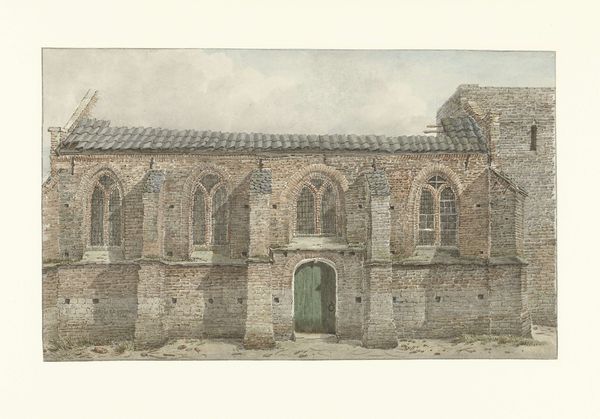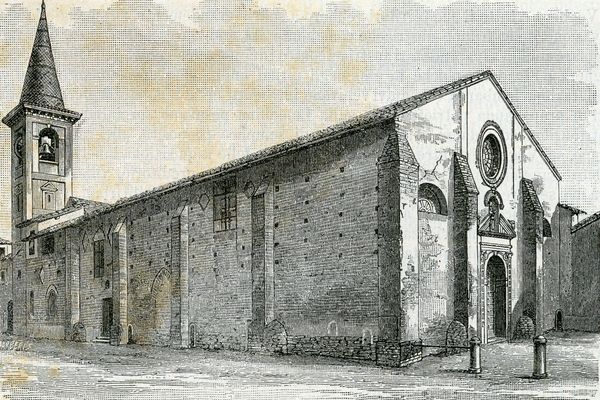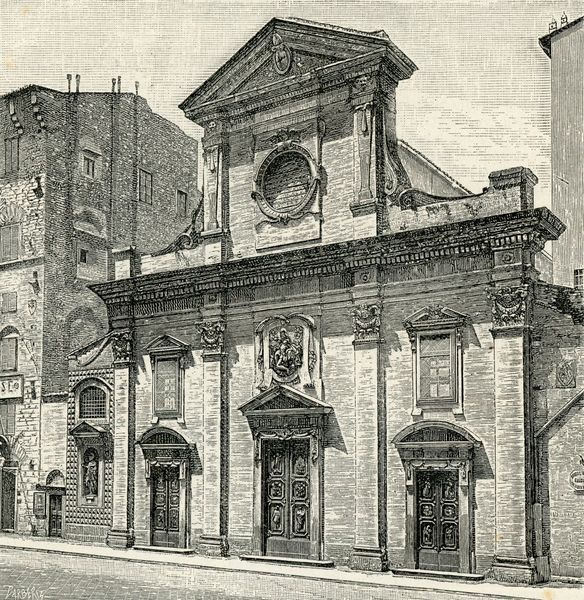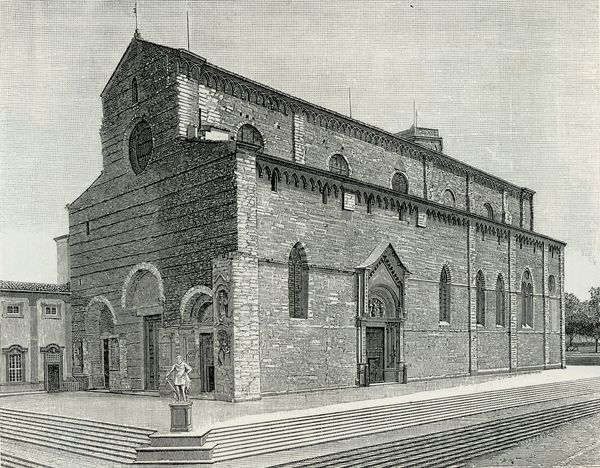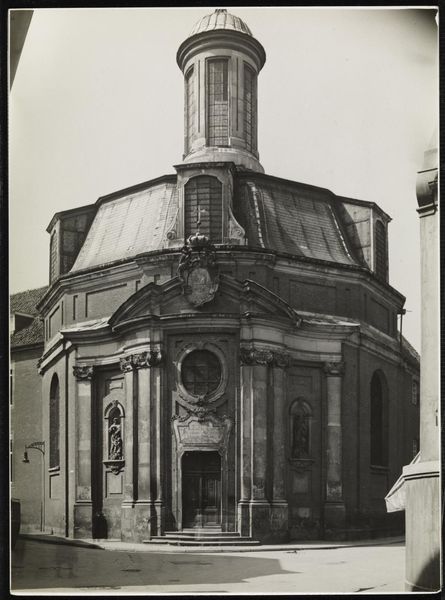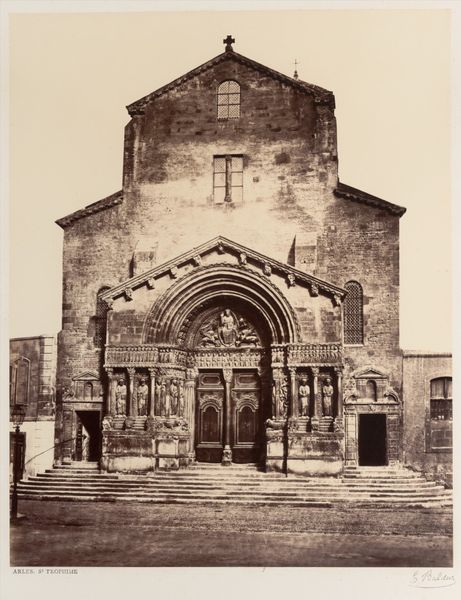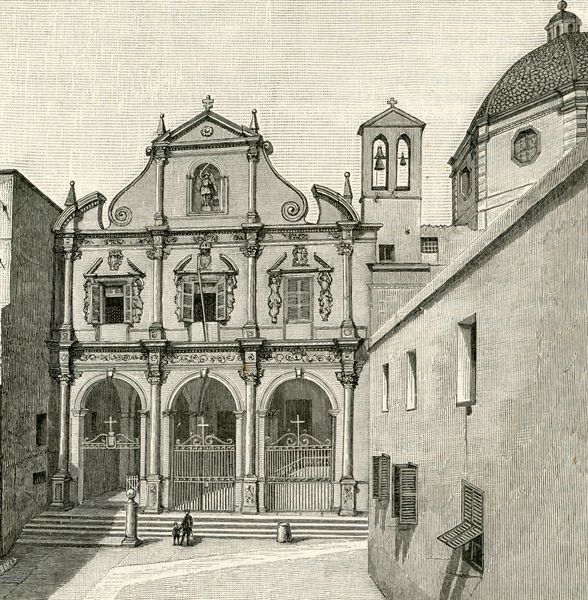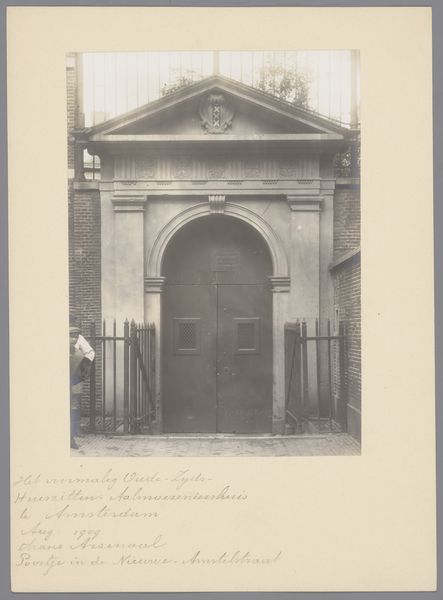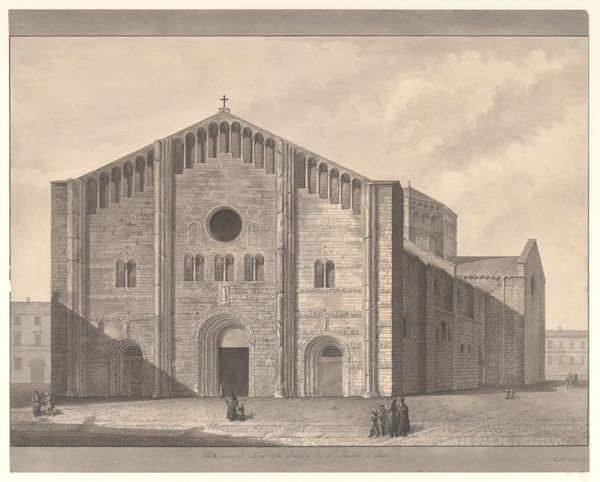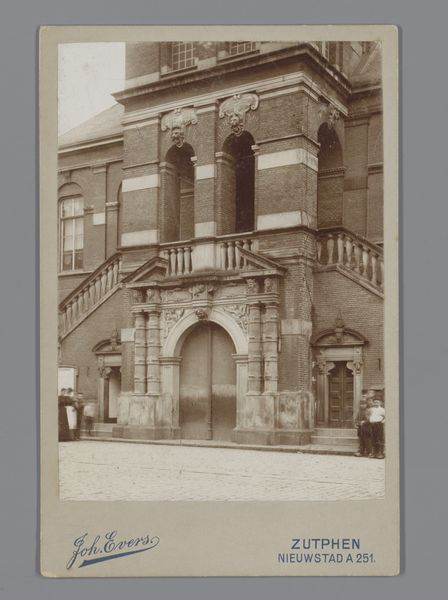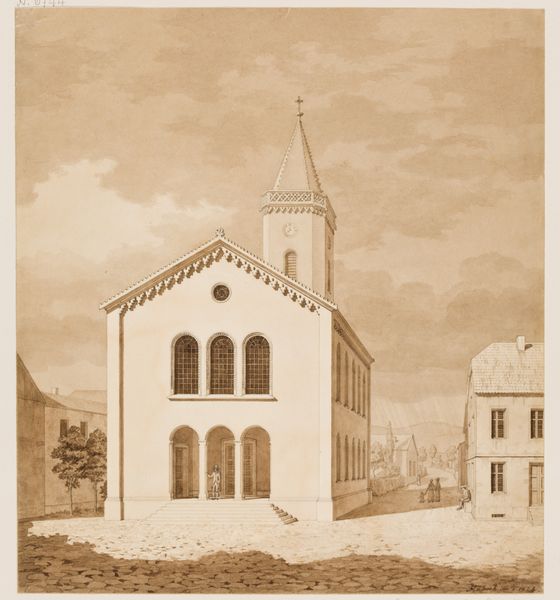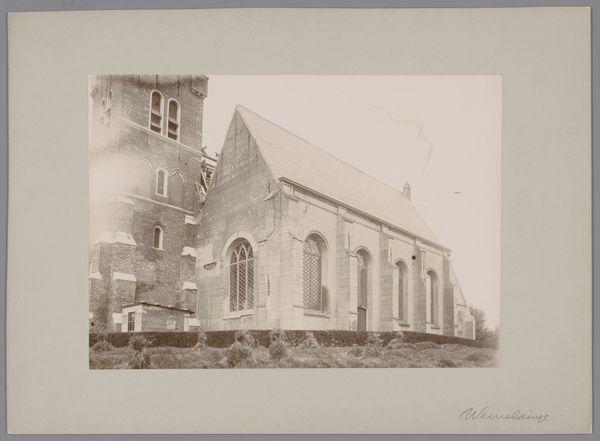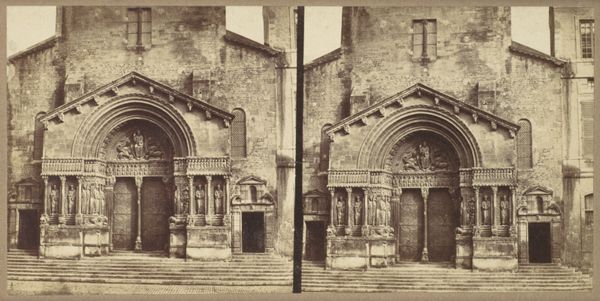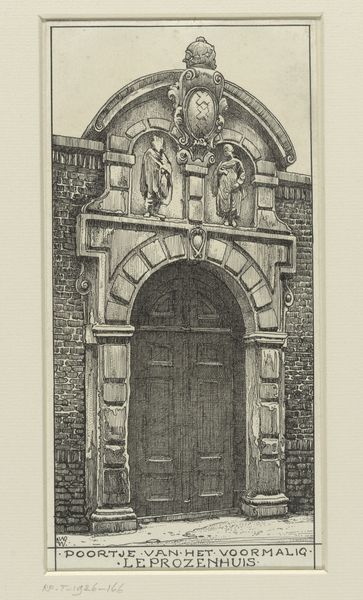
Copyright: Public domain
Curator: Here we see Santa Maria Nova, Vicenza. This design, attributed to Andrea Palladio, dates to 1578. The architecture evokes both neoclassical and Italian Renaissance sensibilities, doesn't it? Editor: Yes, it certainly presents a unique presence. The materiality reads as very stark and monumental. There's a noticeable emphasis on geometry that lends it an aura of almost... stoicism. I wonder about the social implications of that? Curator: Well, consider Palladio's patron class. Built during a time of religious and social upheaval, churches such as this sought to reinforce ideals of hierarchy, of course, but also an explicit reference to history. The columns, the triangular pediment— these speak to an elite understanding of civic power through aesthetics. Editor: True. When examining it through the lens of the construction itself, what raw materials would have been most vital to bring this from drawing to life? I’m looking at how the labor shaped each facet. Curator: Definitely the local Vicenza stone. You can see it in the texture. But, furthermore, consider how Palladio elevates simple material to express humanist ideas about balance and harmony. There are distinct cultural values inherent in the very application. Editor: Precisely, and the façade really reinforces it—its planar surfaces and austere Doric order lend a decidedly utilitarian feel. The lack of ornamentation places full weight on that material’s inherent attributes. A testament to the builder's economy. Curator: Perhaps, though I read that choice through a religious and spiritual lens. The reduction can reflect, on a larger scale, something beyond the immediate tangible world— the austerity speaks to that larger system. Editor: It's always such an interesting contrast to think about something with such pronounced and obvious utility that’s also charged with profound societal meaning, be it spiritual, economical, or any of the other values it brings to its historical present. Curator: Indeed, we each gain insight based on our orientation. Considering these structures— these public spaces—allows us an understanding into the layered fabric of both the present and the past.
Comments
No comments
Be the first to comment and join the conversation on the ultimate creative platform.
